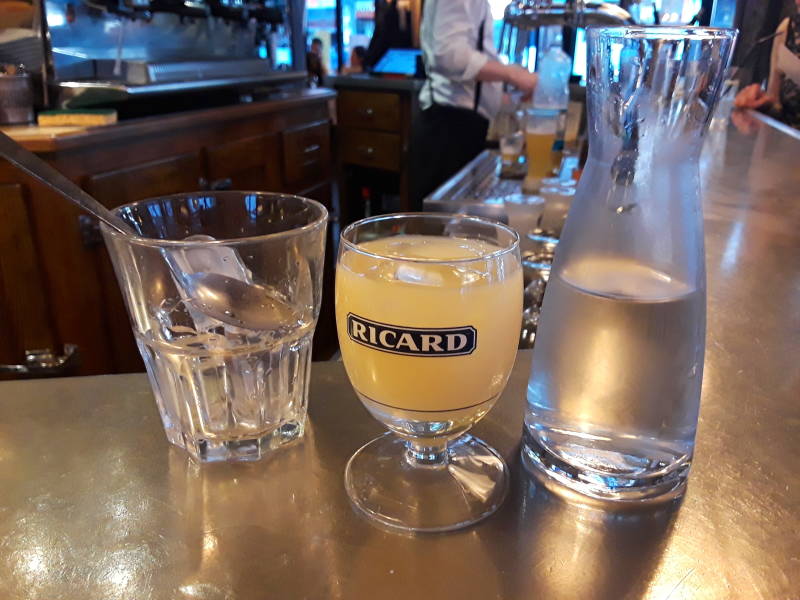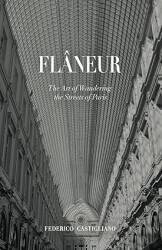
The Art of Flânerie
Wandering Paris With No Specific Purpose
Guesthouses at Booking.com
I was staying at the Vintage hostel,
on rue de Dunkerque near Gare du Nord.
I left there each morning as a
flâneur,
someone who strolls as an acute observer of society
with no specific purpose.
It would be a day of flânerie.
This one took me along the path of a former city wall,
then south along the Canal Saint-Martin
through the 11th and 10th arrondissements of Paris.
I had croissant et café along Boulevard de Rochechouart. looking up to the butte of Montmartre and the dome of the Basilique Sacré-Cœur. Parisians were walking and cycling and scootering to work.
Flânerie inthe 10th
Arrondissement
Boulevard de Rochechouart is one of the Boulevards Extérieurs, it's part of a loop following a former city wall. New walls were built and inner walls demolished as Paris grew. Another day of flânerie had taken me to a pair of grand gates on the next loop in, where a city wall had been built in 1356-1383, then demolished in the 1670s.
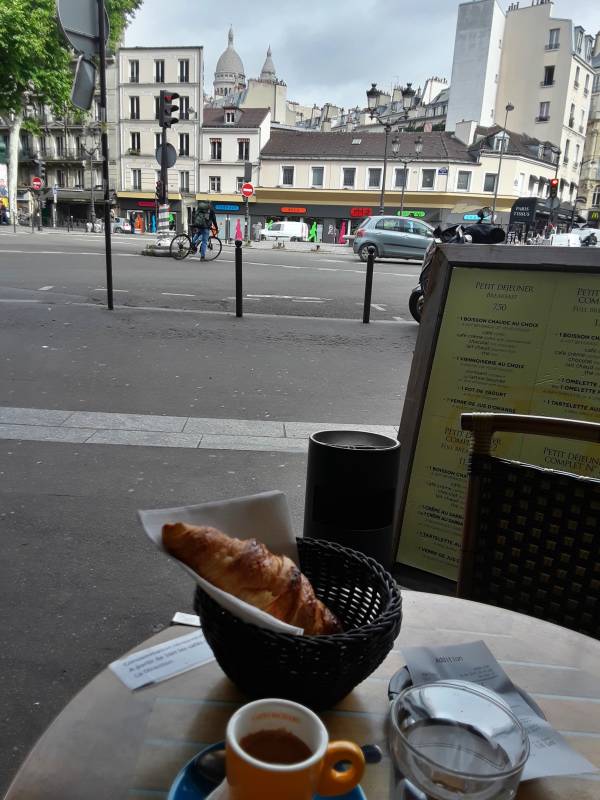
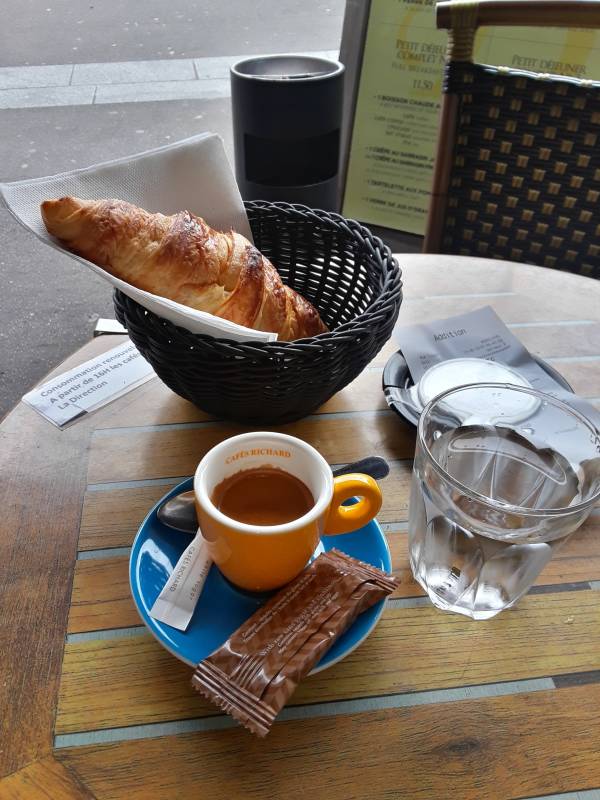
This loop follows the Wall of the Ferme générale. Unlike the earlier walls, built to defend the city from invaders, this wall was built to collect taxes. All goods brought into the city were subject to an octroi or toll. This was an outsourced tax operation, collecting duties on behalf of the King with a significant cut for the tax collectors, who became immensely wealthy.
The wall and its toll were, of course, very unpopular. Many described it as a prison for Paris, in which wealth was extracted from the citizens. The toll was abolished in 1791 during the early stages of the French Revolution, to which the tax's unpopularity had contributed.
Flânerie alongthe Seine
Antoine Lavoisier, "the father of modern chemistry", was guillotined during the revolution, as I saw in a later flânerie. As a scientist, he would seem to be a Revolutionary favorite, but he was an administrator of the Ferme générale, one of the most-hated establishments. The Revolutionaries charged him with tax fraud and the selling of adulterated tobacco, and guillotined him.
But, the toll was restored in 1789. Public acceptance of the toll improved somewhat after Napoléon Bonaparte took power in 1799. The toll was abolished and most of the wall and barriers were destroyed in 1860.
Today, Métro lines 2 and 6 roughly follow its route.
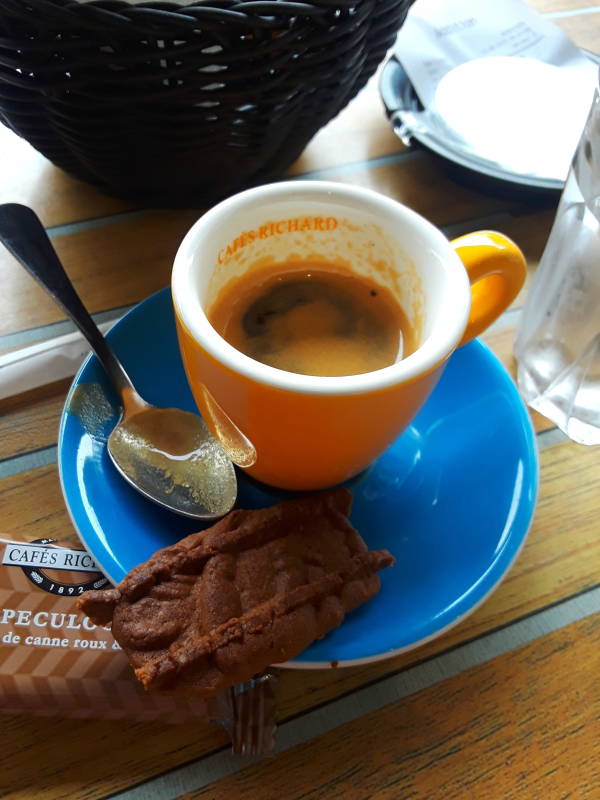
Adequately caffeinated, I paid my bill and left a pourboire, a "for-the-drink" so the waiter could buy his drinks. Then I walked east along Boulevard de Rochechouart.
Many chickens were roasting in a glass fronted oven, where potatoes bake in chicken drippings. Poulet rôti, we will rendez-vous this evening.
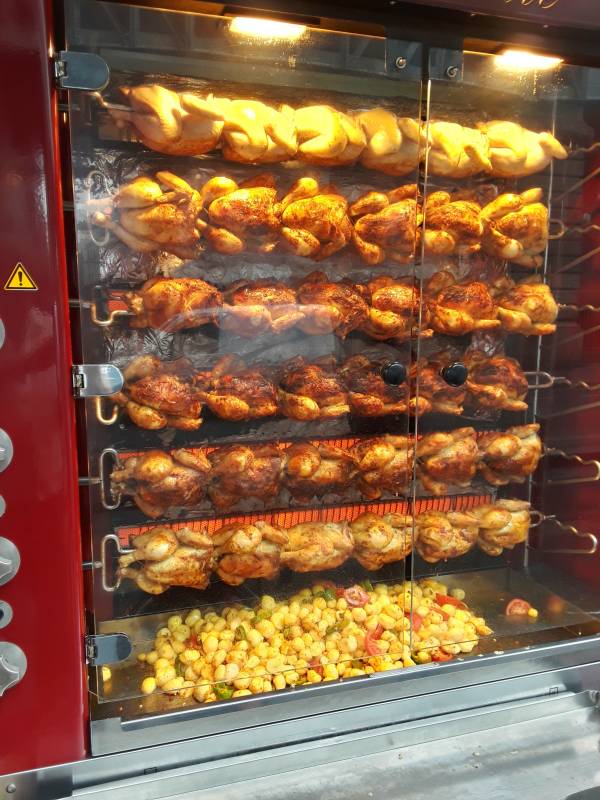
Métro line 2 has come up above ground by the time I reach the next station, Barbès–Rochechouart. A little over 2 kilometers of its 12.4 kilometer length are above ground, with 4 elevated stations like this one.
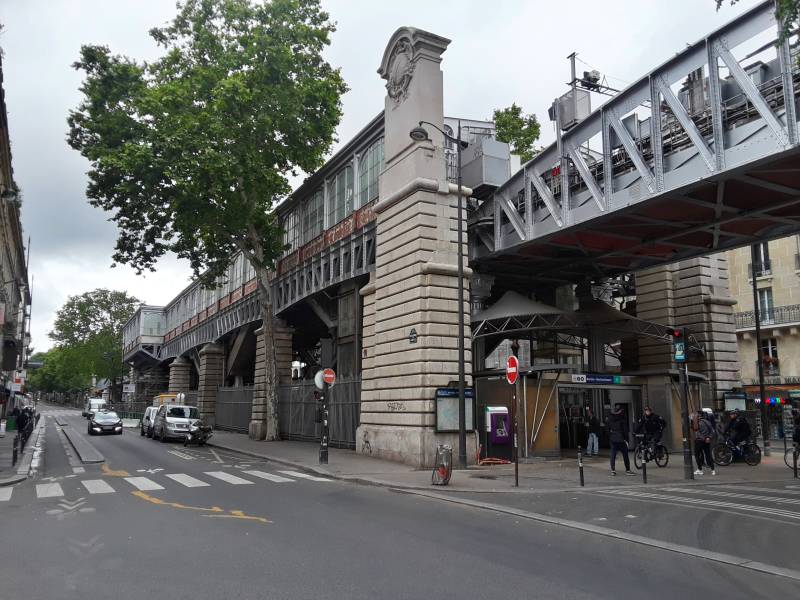
I continued east along the Métro line 2 viaduct. I passed the back side of the Lariboisière Hospital complex. It was built in response to the 1832 cholera epidemic, which exceeded the capacity of the existing hospitals. It's now associated with Paris Diderot University.


Looking back, I see the Basilique Sacré-Cœur up Montmartre.

Gare du Nord
I crossed over the tracks leading north from Paris Gare du Nord. It's the busiest railway station in Europe, with over 700,000 passengers daily. Among other long-haul routes, it's the terminus for Eurostar trains from London,
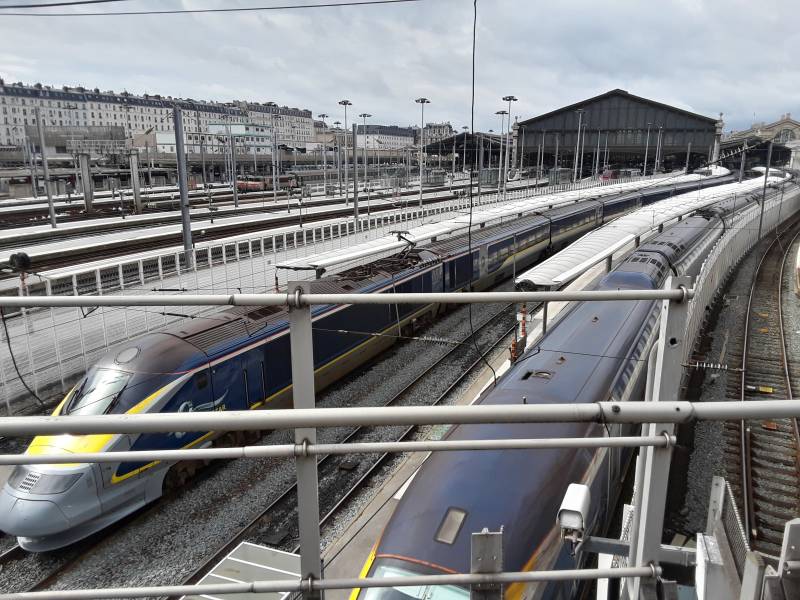
The Thalys train I took from Belgium to Paris also ended here. There's a red Thalys express train extending out of the station.
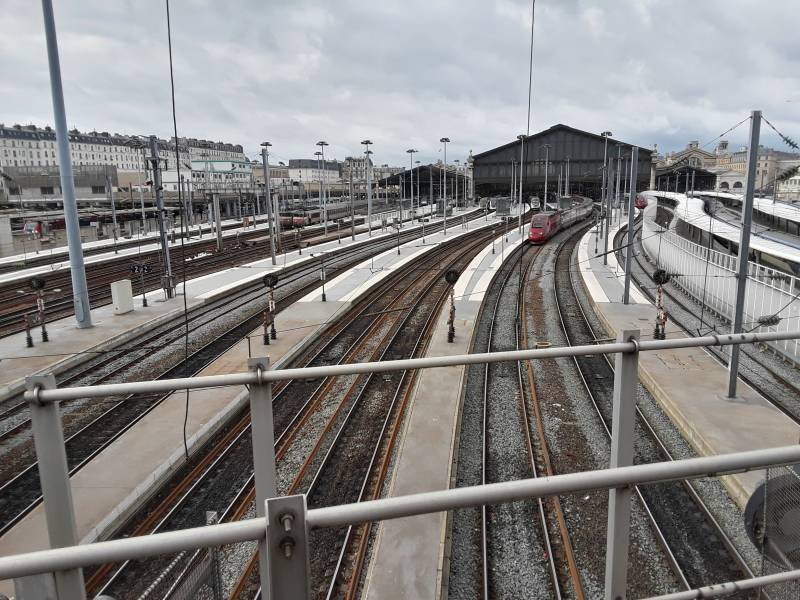
There are many regional and local trains in and out of Gare du Nord. These include SNCF TGV and Picard TER trains serving northern France, and Transilien trains serving the Île-de-France surrounding Paris.


I continued east past La Chapelle Métro station.


There are an enormous number of motor scooters on the streets in Paris. You might wonder where they get their fuel. It seems that many of them refuel in the 10ème arrondissement.
This station offers diesel (or gasoil) and unleaded petrol (or sans plomb). Plus Western Union and other services.
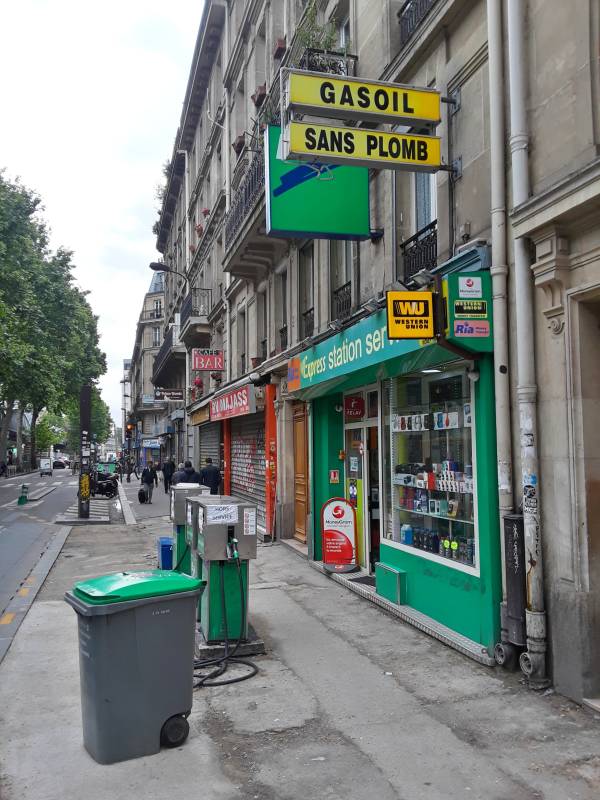
Gare de l'Est
Gare de l'Est is one of the oldest and largest railway stations in Paris, the terminus of a strategic railway network extending into eastern France. It was the departure point for many French troops headed for the trench warfare of the First World War.
The station was opened in 1849 by the Compagnie du Chemin de Fer de Paris à Strasbourg, and an official inauguration with President Louis Napoléon Bonaparte took place the following year.
Riding the Bosfor EkspresiOn 4 October 1883, the first run of the Orient Express departed this station for İstanbul.
Arriving at SirkeçiThese days various "Orient Express" luxury trains traverse western Europe, venturing nowhere near the original line. Today you want to travel east from Paris to Bucharest to connect to the Bosfor Ekspresi and thereby travel by train from western Europe to İstanbul's Sirkeçi Station, where the Golden Horn opens into the Bosphorus.
By train from Warsaw to MoscowToday Gare de l'Est is the terminus of the EuroNight train running east via Hannover, Berlin, Warsaw, Brest, and Minsk to Moscow.
Electricity in FranceThe Gare de l'Est lines have 25 kV 50 Hz overhead electrical power. Many Americans believe that France does not have electrical power outside a few major cities.
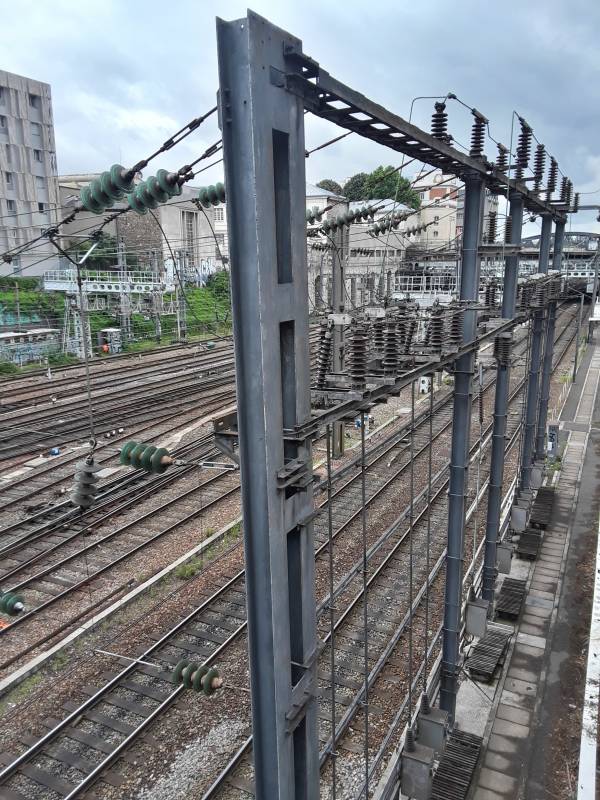
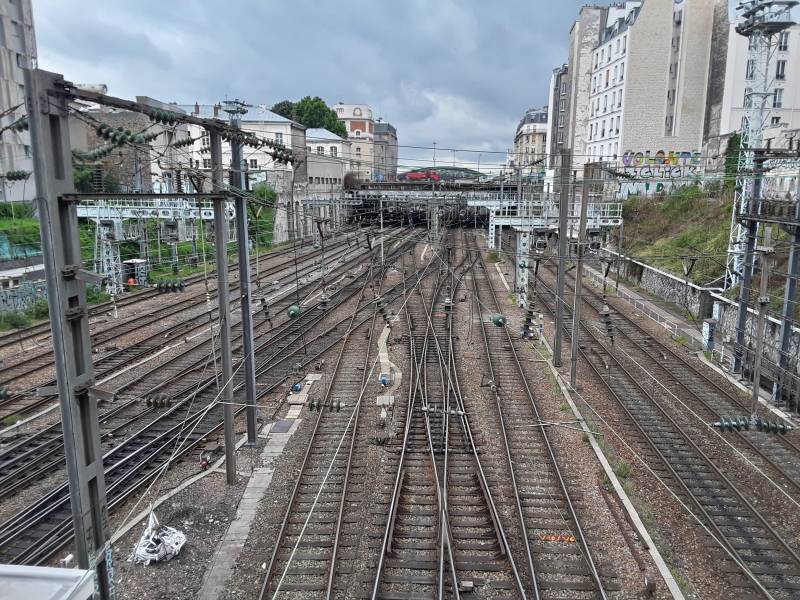
I soon found even more local petrol stations.
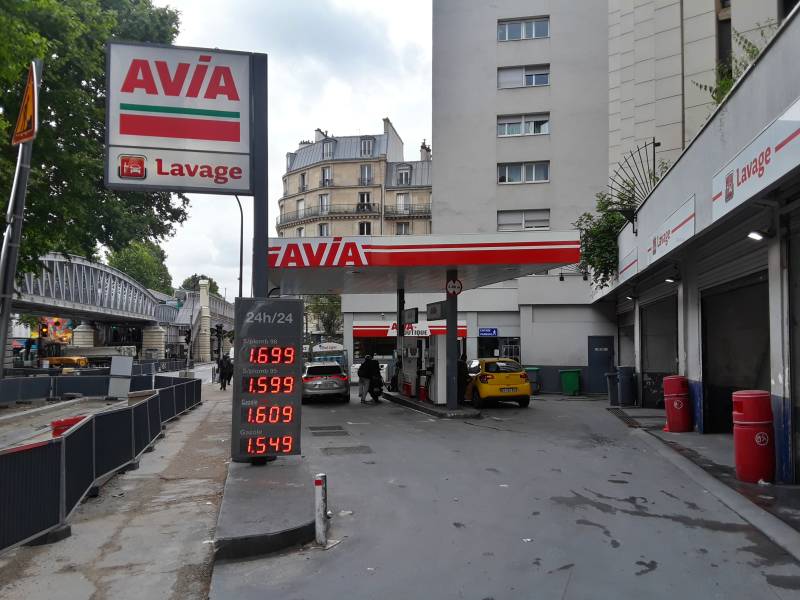
Place de la Bataille-de-Stalingrad
This square commemorates the Russian city where the Soviet Army won a decisive victory over Germany between September 19, 1942, and February 2, 1943.
The Rotonde de la Villette is one of the few former toll-collection pavilions left from the wall. The opulent design of the toll-collection pavilions made the scheme even less popular.
The area has become notorious since the late 1980s as a place to buy, sell, and use drugs, especially crack cocaine. Stay clear of les maudous, the mostly West African crack dealers.

The Battle of Stalingrad memorial is on the south edge of Bassin de La Villette. This is part of the 130-kilometer network of Paris canals.
French canalboat trips
The largest component is the 108.1 kilometer Canal de l'Ourcq, which splits from the Ourcq river near the village of Tresnes and brings fresh water to Paris. The Canal Saint-Denis is about 17.4 kilometers long. Then, continuing south from La Villette is the Canal Saint-Martin.
Paris SewersThis basin is about 800 meters long and 70 meters wide. It provides plenty of room for turning a barge, and it serves as a reservoir providing about half of the roughly 380,000 cubic meters of water Paris needs daily for flushing sewers, cleaning gutters, and watering parks.
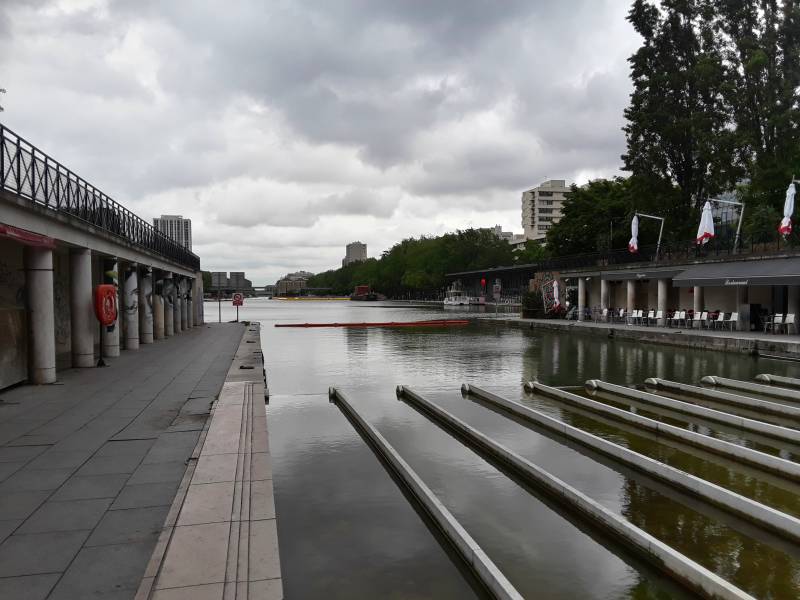
Roman Emperor Julian II had decreed the construction of the Aqueduct d'Arcueil in the 4th century CE, it carried fresh water to the Cluny Baths. Julian was called "the Apostate" for his rejection of Christianity and promotion of Neoplatonic Hellenistic religion in its place. This was an unsuccessful attempt to restore the ancient Roman values and traditions and thereby save the Empire from dissolution. The Western Empire continued its rapid fade, and the aqueduct soon fell into disrepair.
Napoléon Bonaparte decided in 1802 that a canal was needed to bring in fresh water and prevent the frequent epidemics of dysentery and cholera. Given Napoléon's numerous other projects (e.g., marching into Russia in the winter), the canal wasn't built until 1822–1825.
During the cholera epidemic of 1832, the canal water was much less bad than that of the Seine. The city discharged waste directly into the river, including waste from Hôtel-Dieu, the main hospital on Île de la Cité since medieval times and before.
I will make my way through les maudous and continue my flânerie to the south along the Canal Saint-Denis. Here's how the canal's exit from the basin looked in 1911, when the shifty characters were instead offering draughts of laudanum.

South Along Canal Saint-Martin
Canal Saint-Martin is 4.55 kilometers long, leading south from Bassin de La Villette to Arsenal, the marina basin of Paris, and emptying into the Seine a short distance upstream of Île de la Cité.
There are nine locks dropping the water level 25 meters down to the river. There are four double locks along the northern half of the canal, and a final single lock at the river. This is the top of the upper pair, the Locks of the Villette, leading down out of the basin into the canal.
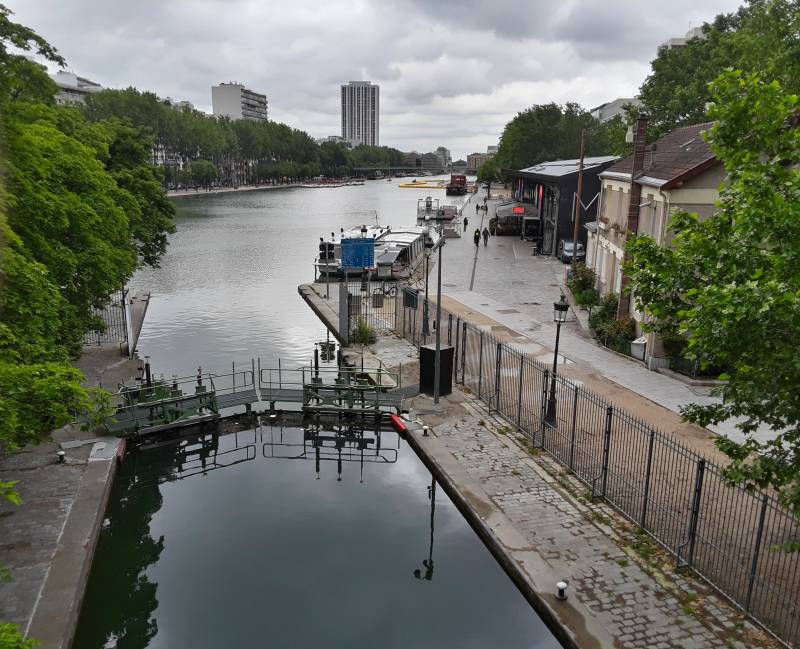
Looking downstream, the locks drop the canal enough to fit beneath the boulevard.
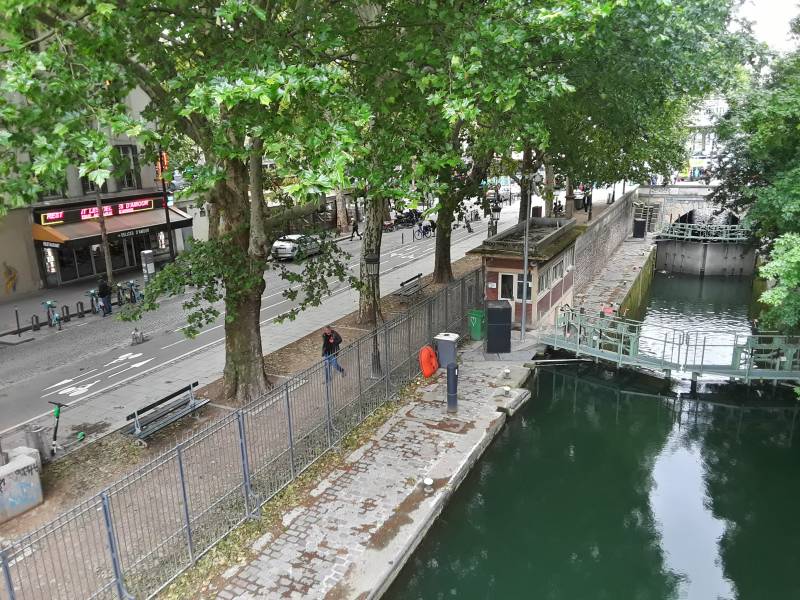
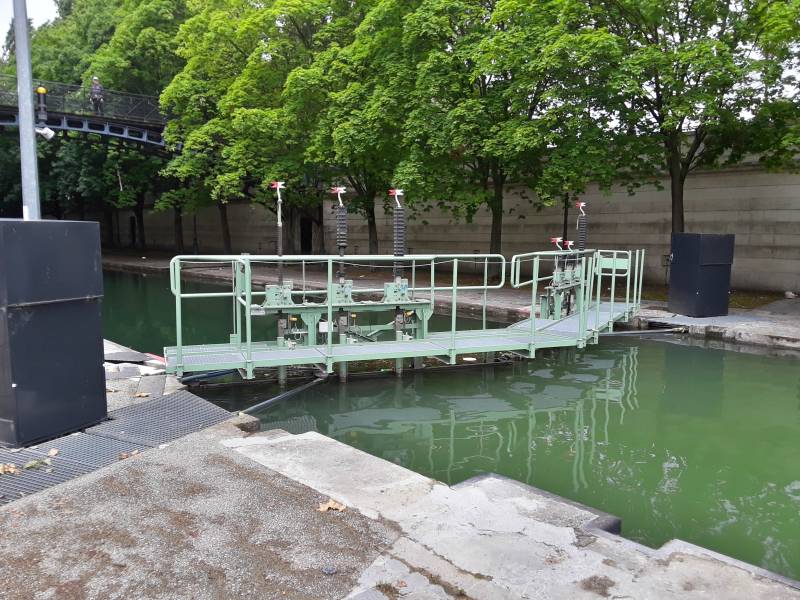


Alfred Sisley (1839-1899) painted scenes along Canal Saint-Martin. This one from 1870 is in the collection of the Musée d'Orsay.
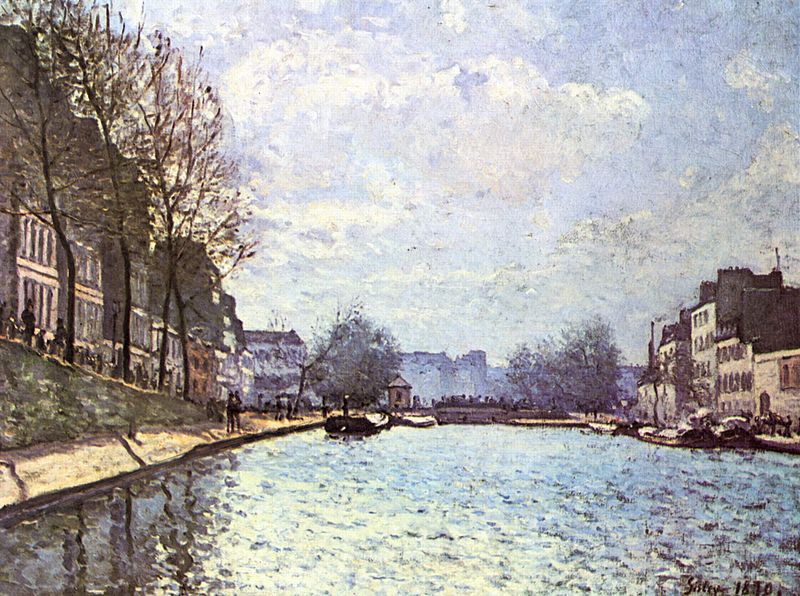
The long red building is the headquarters of the the river division of the fire department, the Sappers and Pumpers. If you sink your boat, or drive your car into the canal, you call the fire department.

Impromptu en plein air fashion shoots happen along the canal.
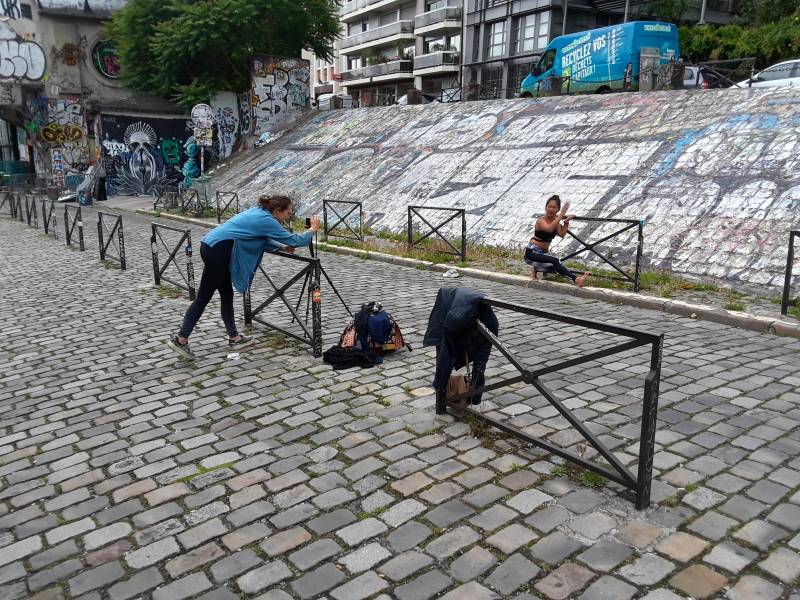
Every few years the canal is drained, and assorted trash and treasure like this bicycle is retrieved.
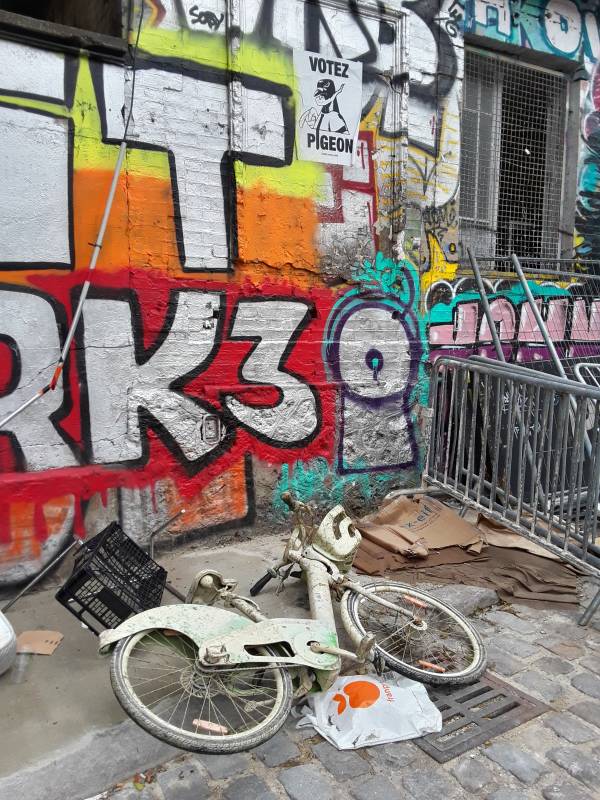
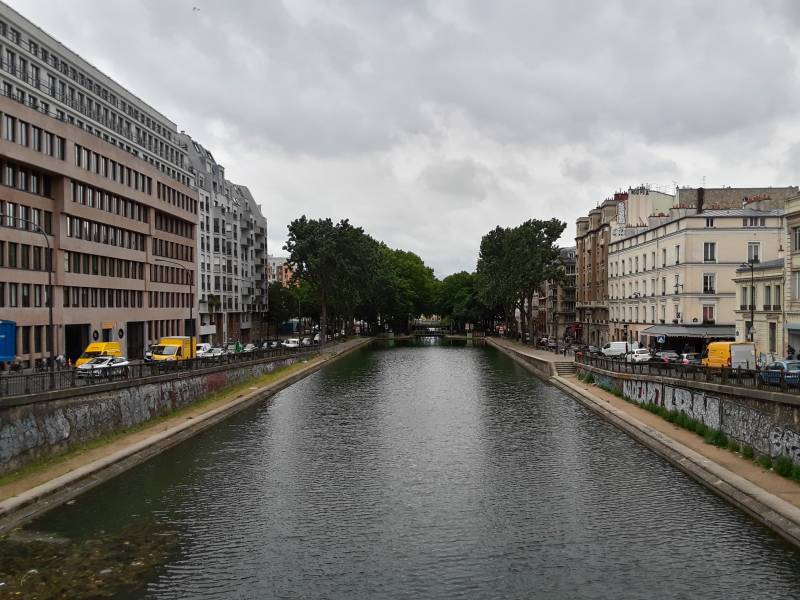
Then we come to the 3rd and 4th, the Locks of the Dead. Yes, it's les écluses des Morts.

A nearby side street leads to another small petrol station.
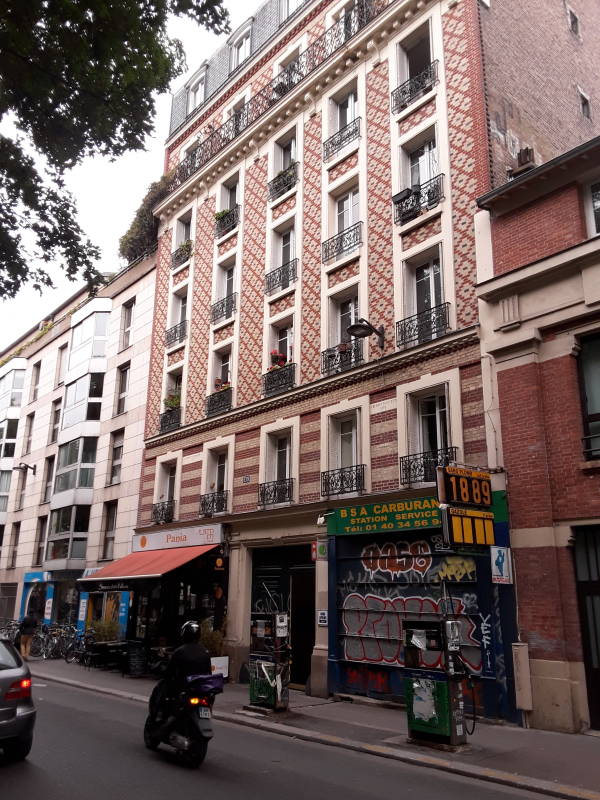
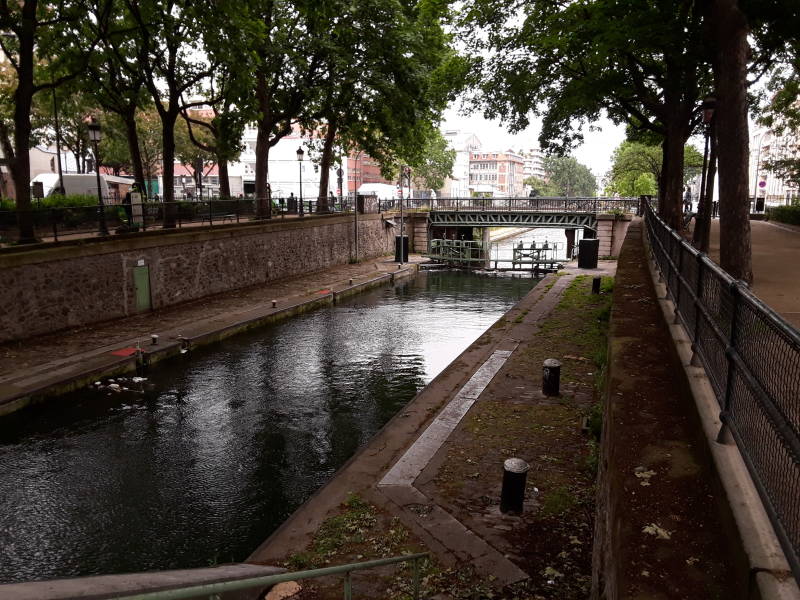
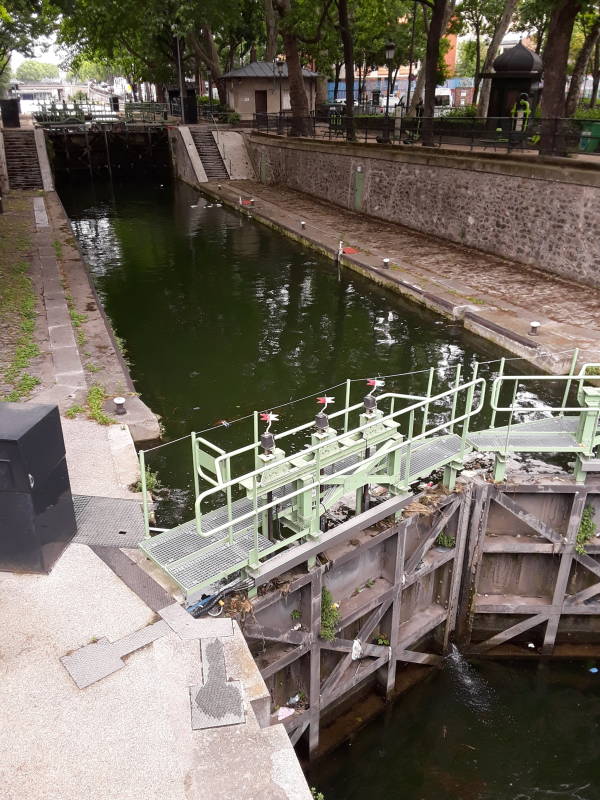
A nearby school was originally for young boys only. Now it is more égalitariste.
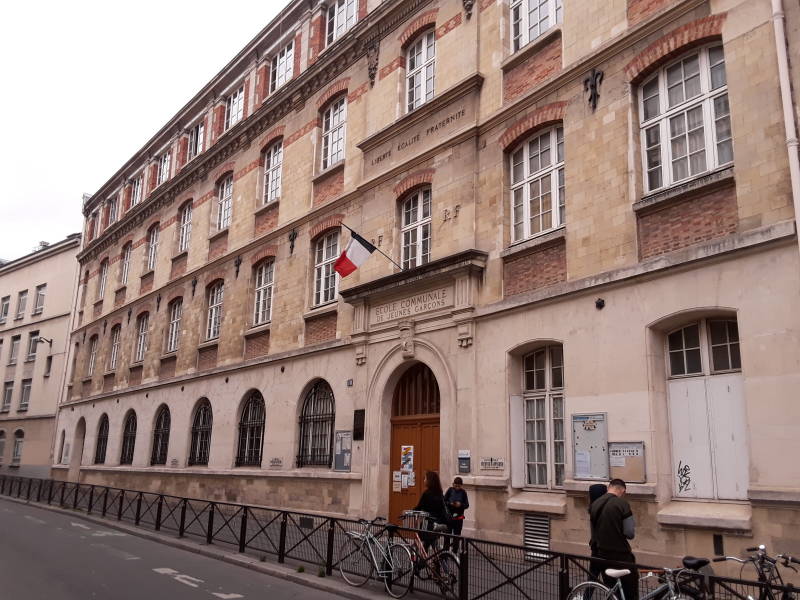
Like all French schools, its healthy menu is posted.
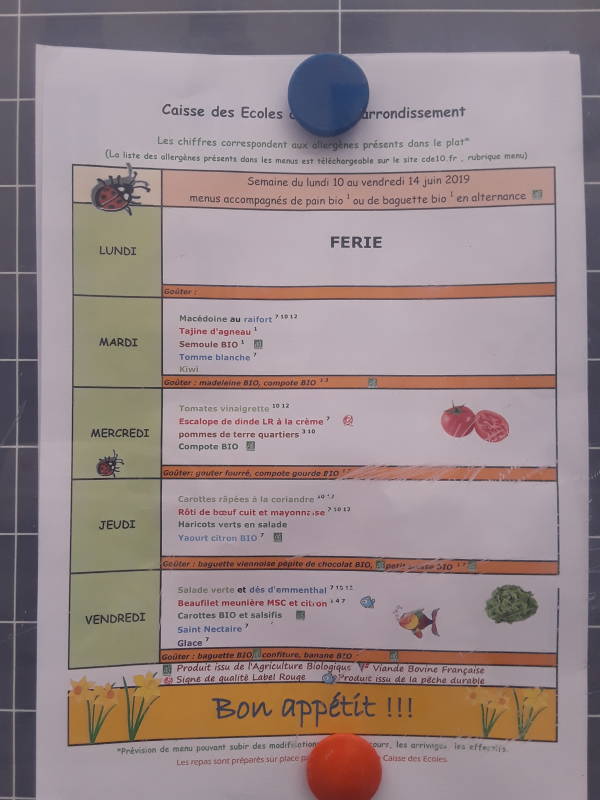

And, sadly, like many schools, it has a memorial to the several students deported to the German death camps with the help of the Vichy government.
A tour boat comes around the bend. The canal was busy with freight traffic into the mid 20th century, bringing grain, building material, and other goods into Paris. Bassin de la Villette was the 4th busiest French port after Marseille, Le Havre, and Bordeaux, and Arsenal at its south end was also quite busy.
Competition from rail and road transport grew, and factories, warehouses, and workshops along the canal closed down. Today the canal traffic is almost all pleasure craft.
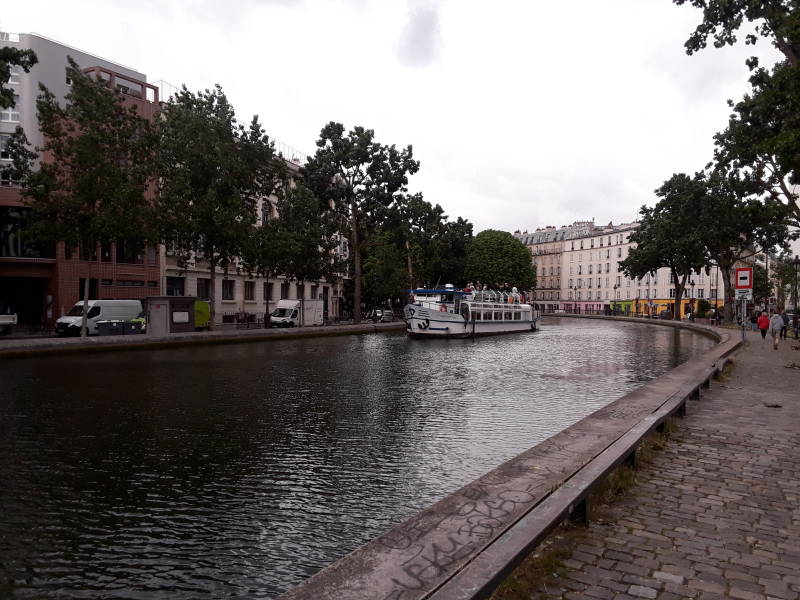
Around the bend we come to the Locks of the Récollets, the 5th and 6th locks.
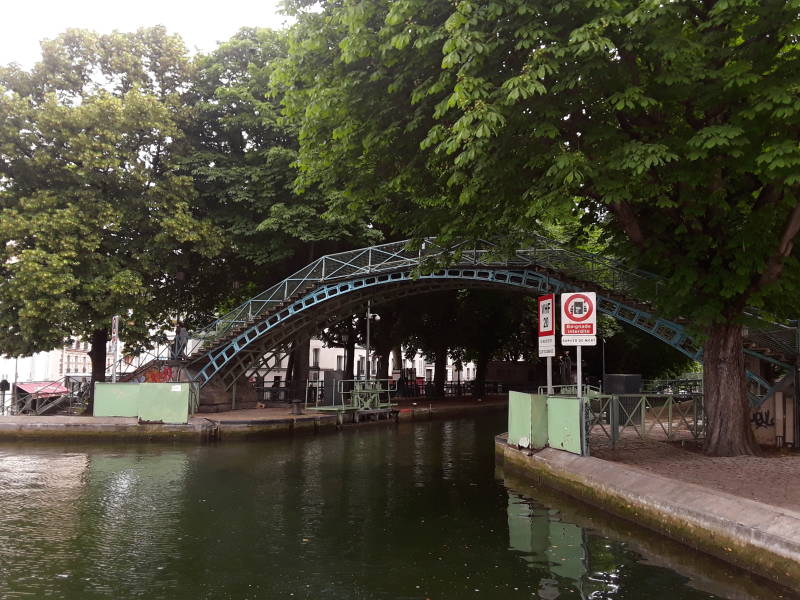
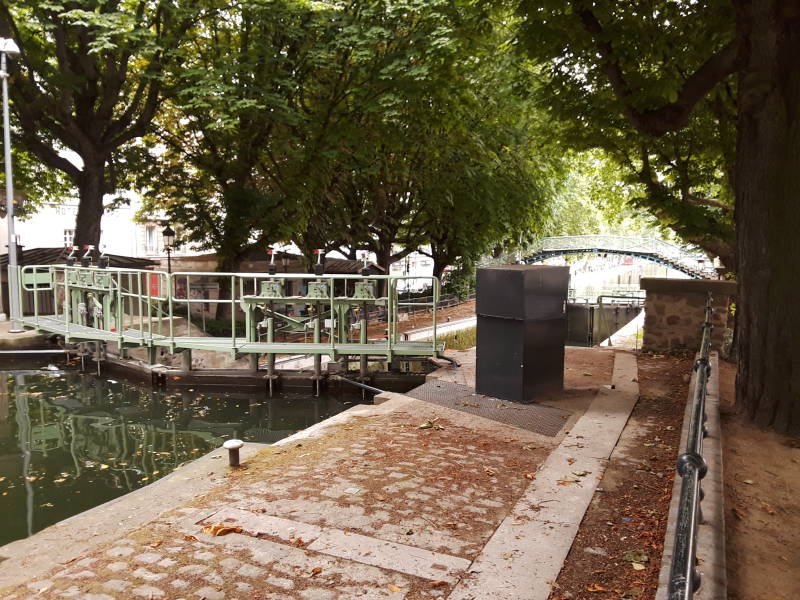
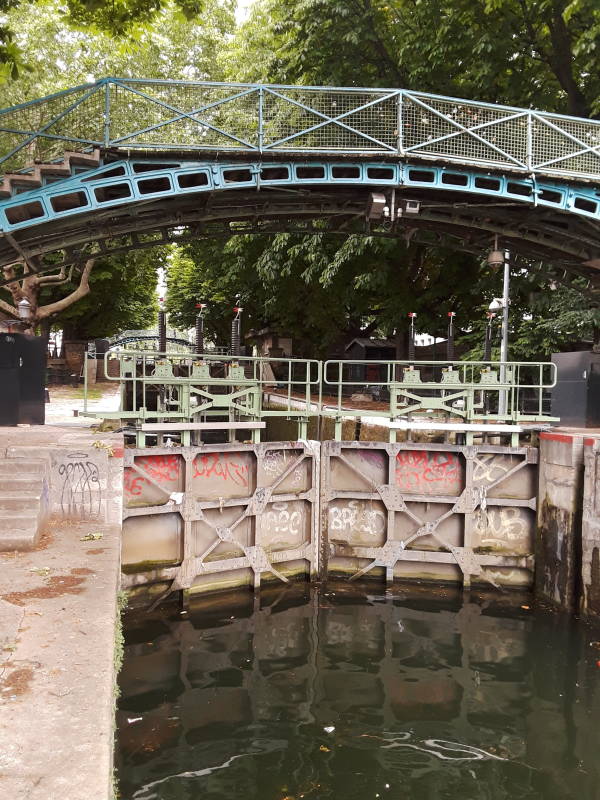
A sturdy steel pissoir stands along the broad sidewalk paralleling the canal.
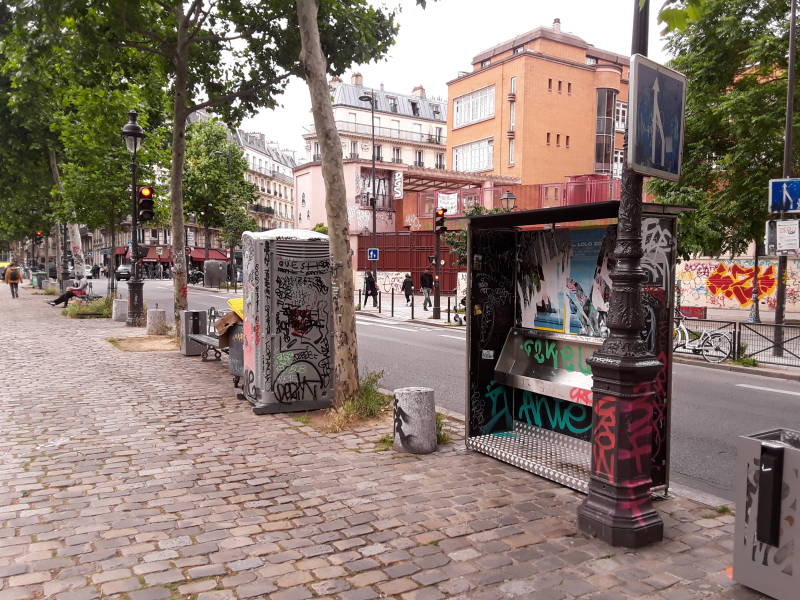
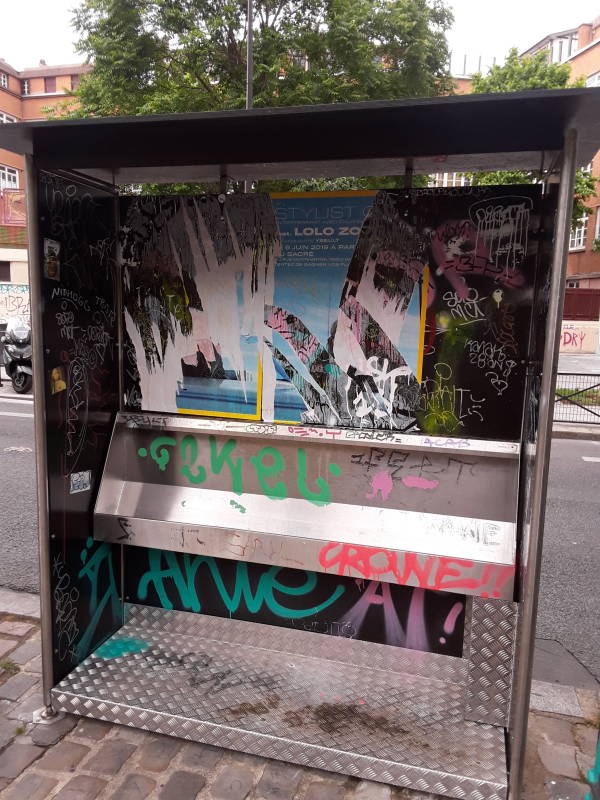
The Canal Disappears Underground
Georges Eugène Haussmann undertook an enormous project of modernization of Paris in the mid-19th century. The open channel of the canal hindered traffic between the center of Paris and the newly expanding area to the north-east. It would also hinder military advances into unruly neighborhoods, a concern for the nervous government.
So, Haussmann planned to cover much of the southern part of the canal, 2 kilometers of its total 4.55 km length. This required draining the canal to excavate the floor of its lower section some 5.5 meters lower.
The section under Boulevard Richard-Lenoir and Place de la Bastille was covered within three years of Haussman's plan of 1860. The section from Boulevard Richard-Lenoir north to the double Locks of the Temple remained open until 1907.

The double Locks of the Temple drops the water level enough for it to carry boats through the 2 kilometer covered stretch.
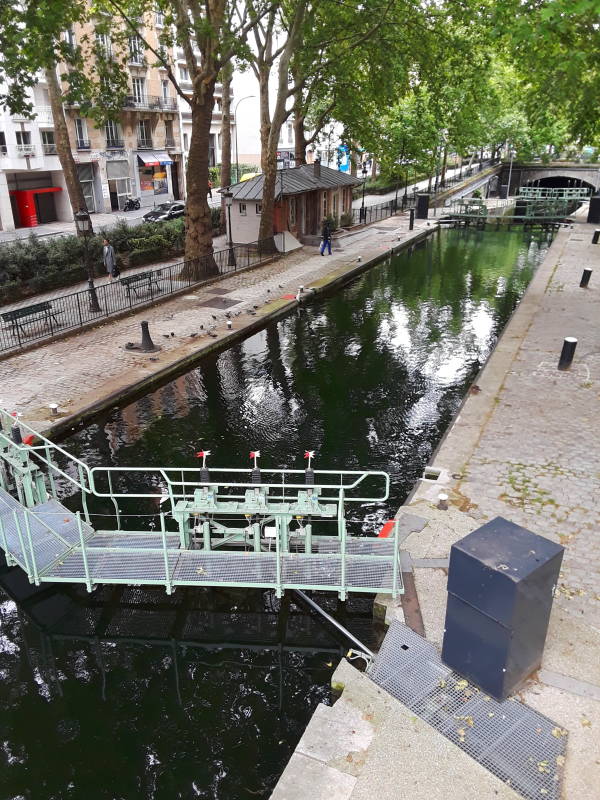
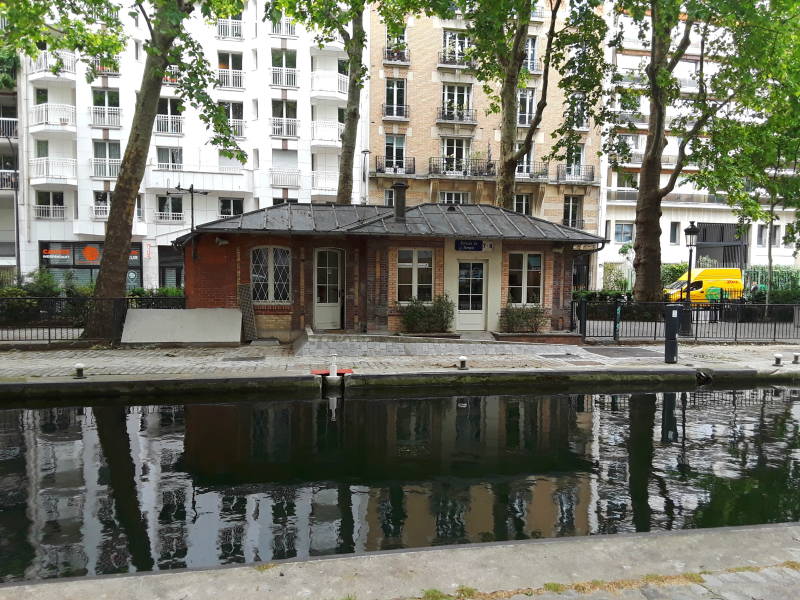
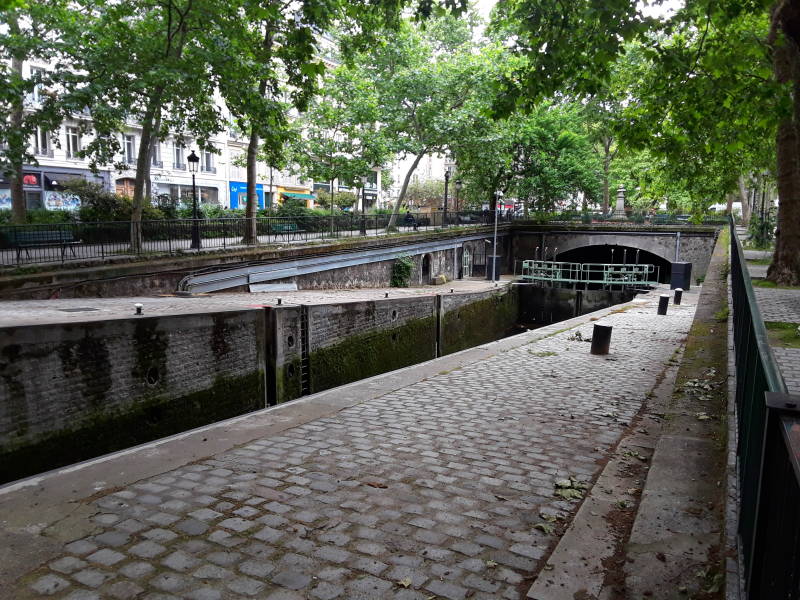
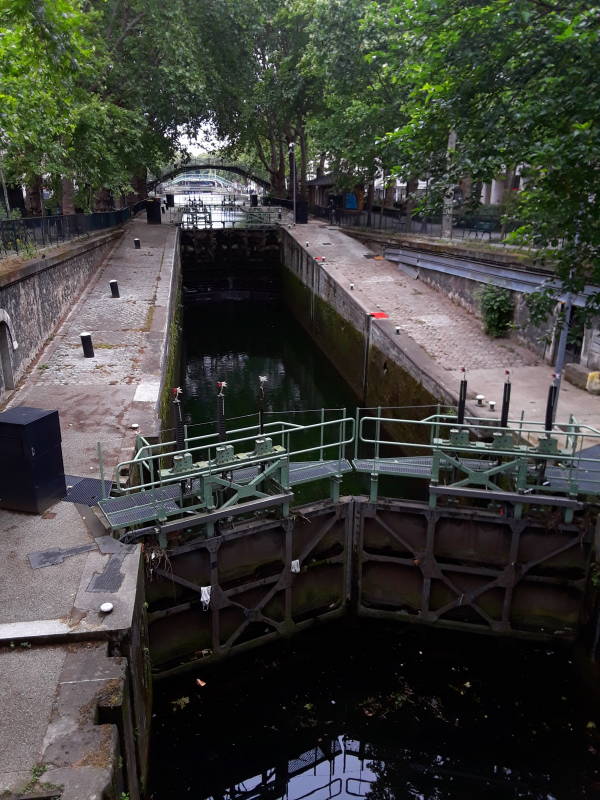

An 1862 engraving depicts the covered canal. Openings in the vaulted ceiling admitted some light.
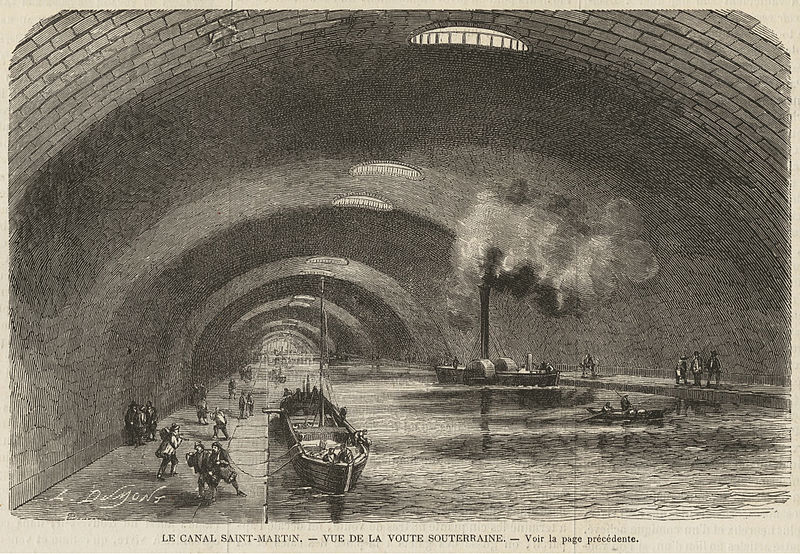
Boats were moved by human power until the 1920s, as you could hire people for less than you would spend feeding and caring for animals.
To Place de la République, and on to Château d'Eau
It was a short walk from there to Place de la République, with the statue of Marianne, the personification of France. Until 1879 this was the Place du Château d'Eau, the Water Tower Place.

Continuing west on rue Château d'Eau brought me back to that café.

I had a Normandy cidre and sat in the doorway, watching deliveries and passers-by.

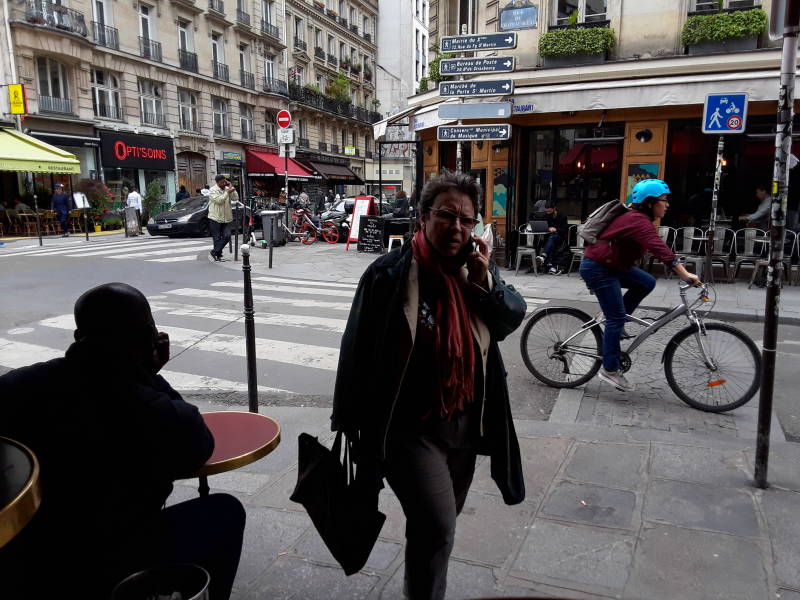
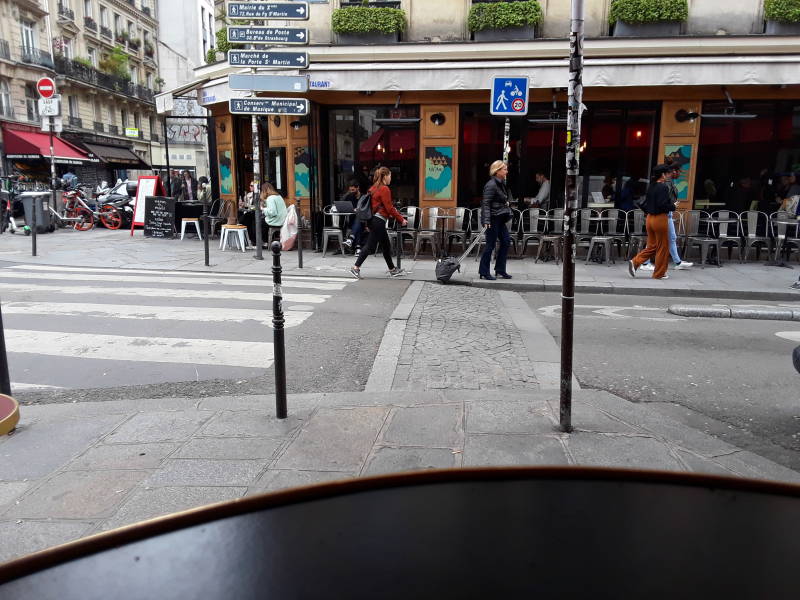
Just like the Lafayette Brewing Company, they host Science on Tap events.
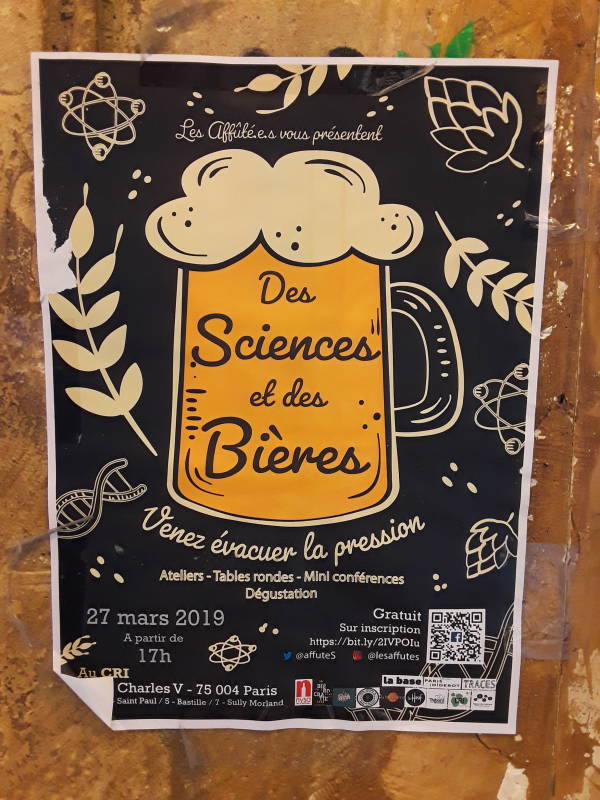
Directly across at No. 78 rue Château d'Eau, a historic marker tells us that Lieutenant Colonel Yves Masiee once lived here. A hero of the French Resistance, he was shot by the Germans at Fontainebleau on 17 August 1944.
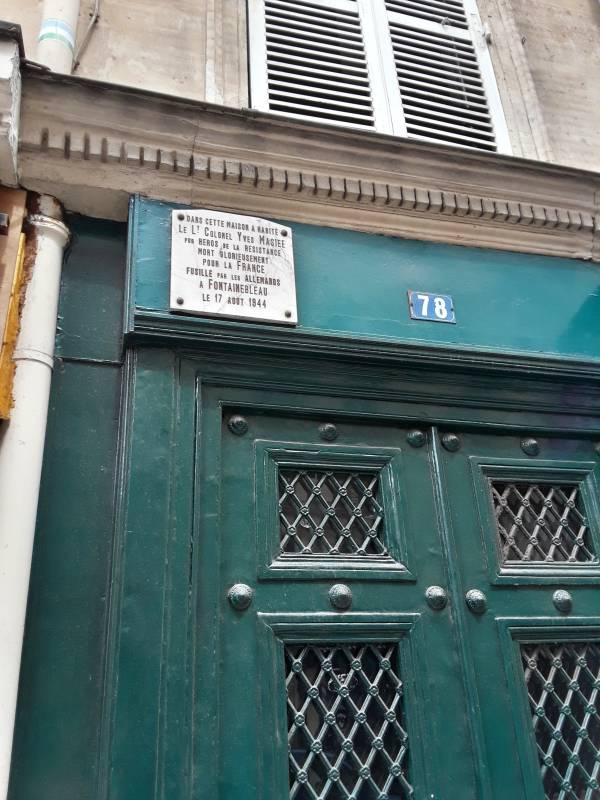
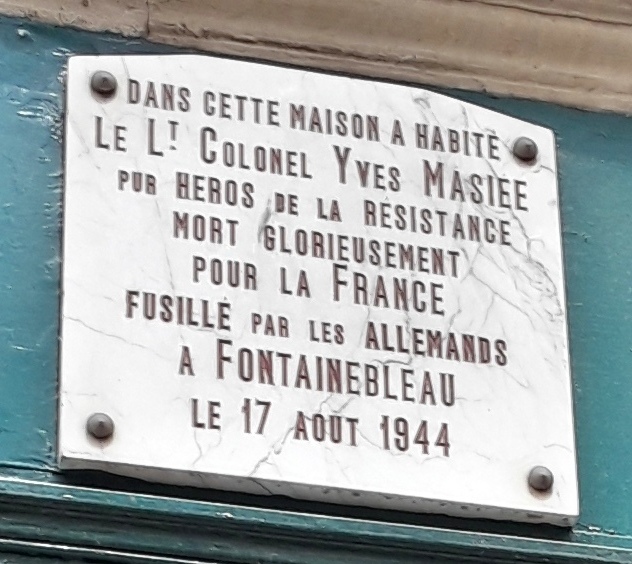
Wandering on south into the 3rd arrondissement, a school offers the usual menu and memorial to Nazi barbarism.


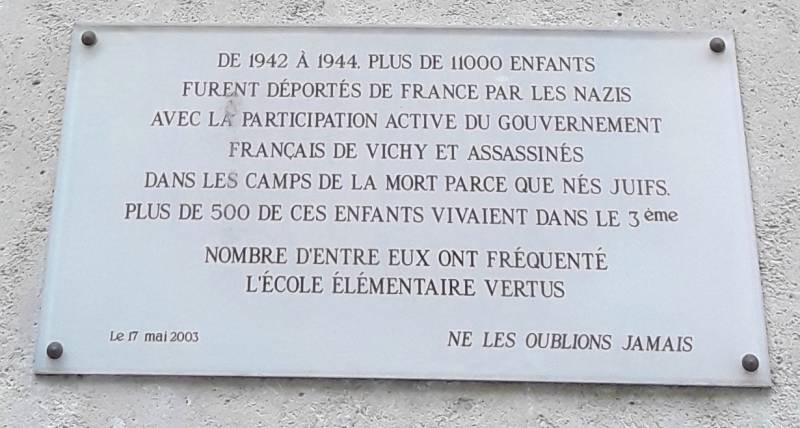

Back to the Neighborhood
Back in the neighborhood where I was staying, I returned to the Côté Soleil café for dinner, poulet rôti.
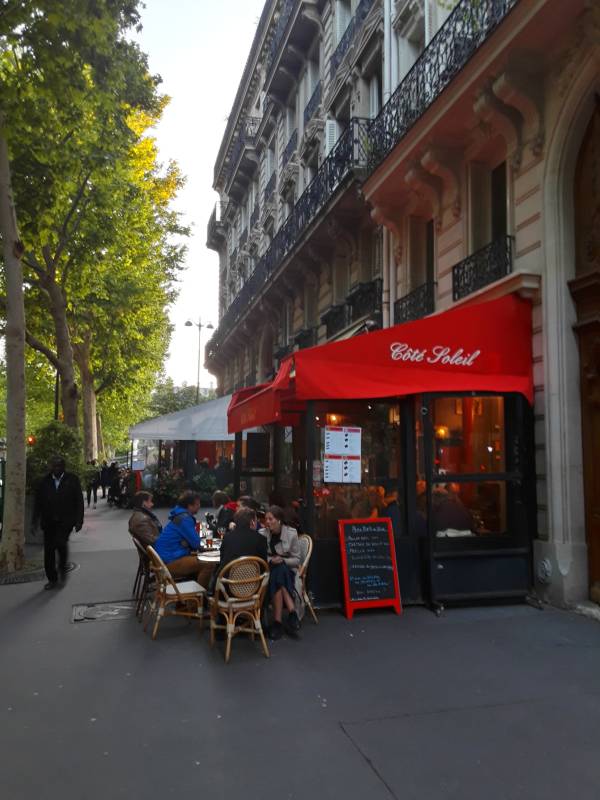
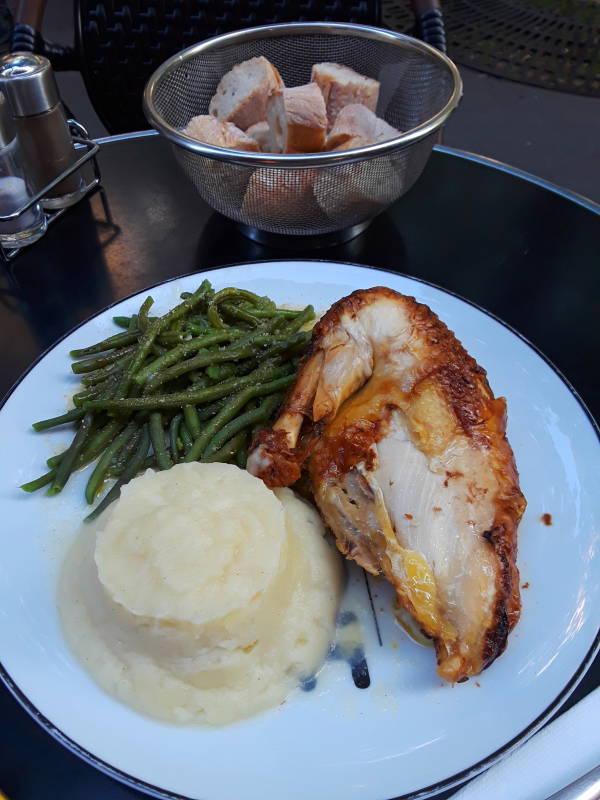
Then a drink along the Boulevard de Rochechouart near where I had started the day.


And then, as evening fell, a pastis. It's an anise-flavored spirit from southeastern France, similar to absinthe, ouzo, rakı, arak, and other licorice spirits from around the Mediterranean.
These anise-based spirits contain anethole, which is highly soluble in ethanol but only slightly soluble in water.
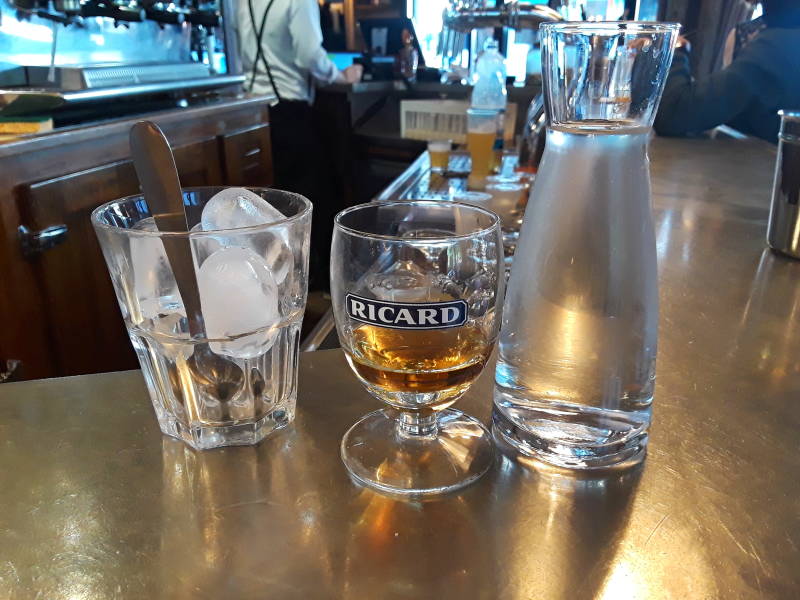
Anethole is soluble in an aqueous solution with 30% or more ethanol by volume, and pastis is typically 40-45% ethanol. The resulting neat pastis is dark but clear, as seen above.

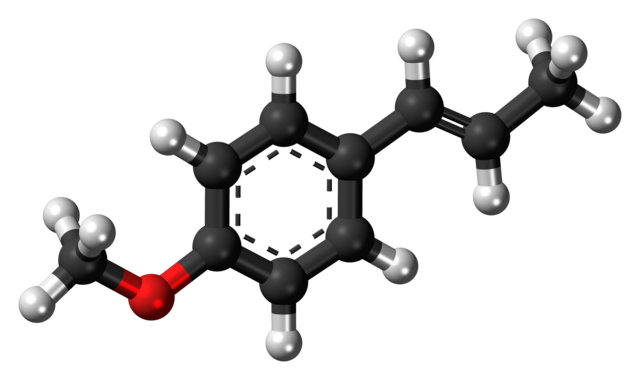
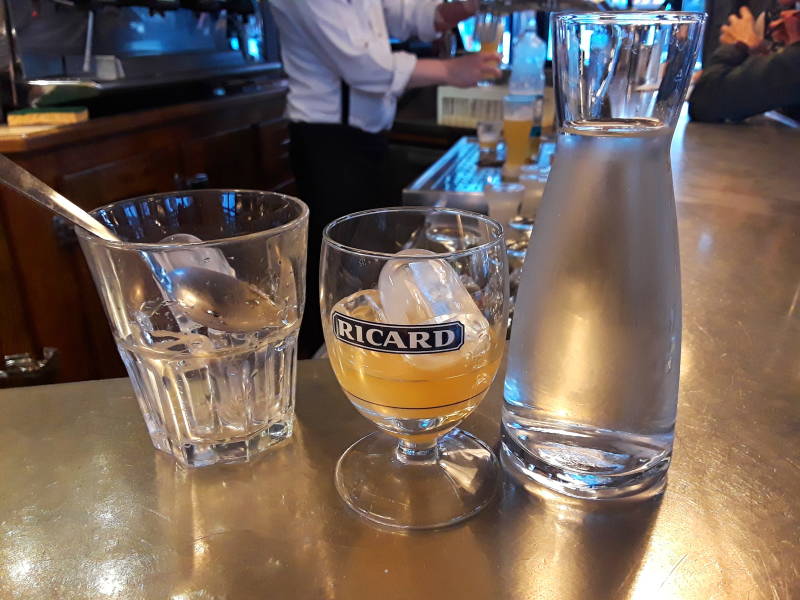
When diluted to below 30% ethanol by adding cool water, the hydrophobic anethole becomes insoluble and forms a cloudy emulsion. The effect is called a louche, a term that is also applied to the flâneur lifestyle.
